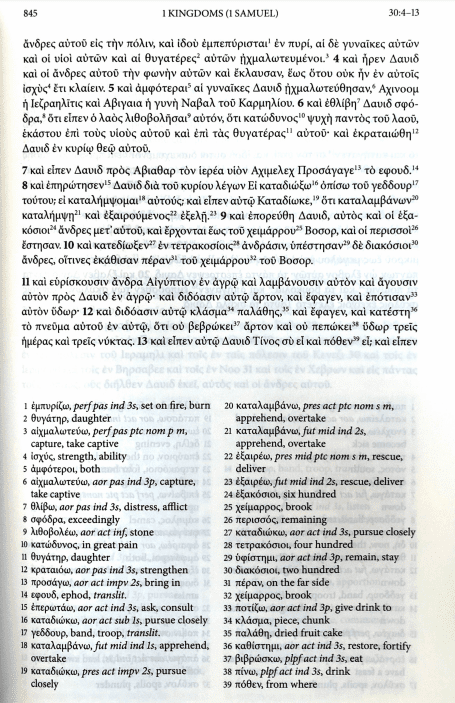An amazingly helpful new resource has just been published by Hendrickson, and I’ll jump the gun on my annual selection of books — planned for December 3! But today, a fantastic resource for Bible students.
 Gregory R. Lanier and William A. Ross have published something for any pastor or student who wants to do more than “check” a translation in the LXX: it’s called Septuagint: A Reader’s Edition.
Gregory R. Lanier and William A. Ross have published something for any pastor or student who wants to do more than “check” a translation in the LXX: it’s called Septuagint: A Reader’s Edition.
Here’s what it does:
- The entire text of the LXX is printed.
- Words that are unfamiliar to typical readers are footnoted and given a brief translation at the bottom of the text.
- The project is turned into two volumes, so it’s not unwieldy, with excellent font so that it is easy to read.
No reason now for many not to have a copy of this amazingly helpful resource for Bible students.
The LXX was the NT authors’ Bible — mostly. It was the diaspora’s Bible until Latin took over the Western Church. More could be said, but one cannot ignore the LXX in Bible study.
So, you want to know which words are provided? Here is their explanation:
- The lexeme appears 100 times or fewer in Septuaginta.
- The lexeme appears 30 times or fewer in the UBS Greek New Testament (Fifth Edition).
- The specific form is spelled in a way that would likely be unfamiliar to readers (even for otherwise common lexemes); examples include verbs in the pluperfect or optative, verbs with certain irregular stem changes, and adjectives in comparative/superlative form.
- The specific occurrence is part of a phrase or idiom that is uncommon in the Greek NT but relatively common in the Septuagint…











